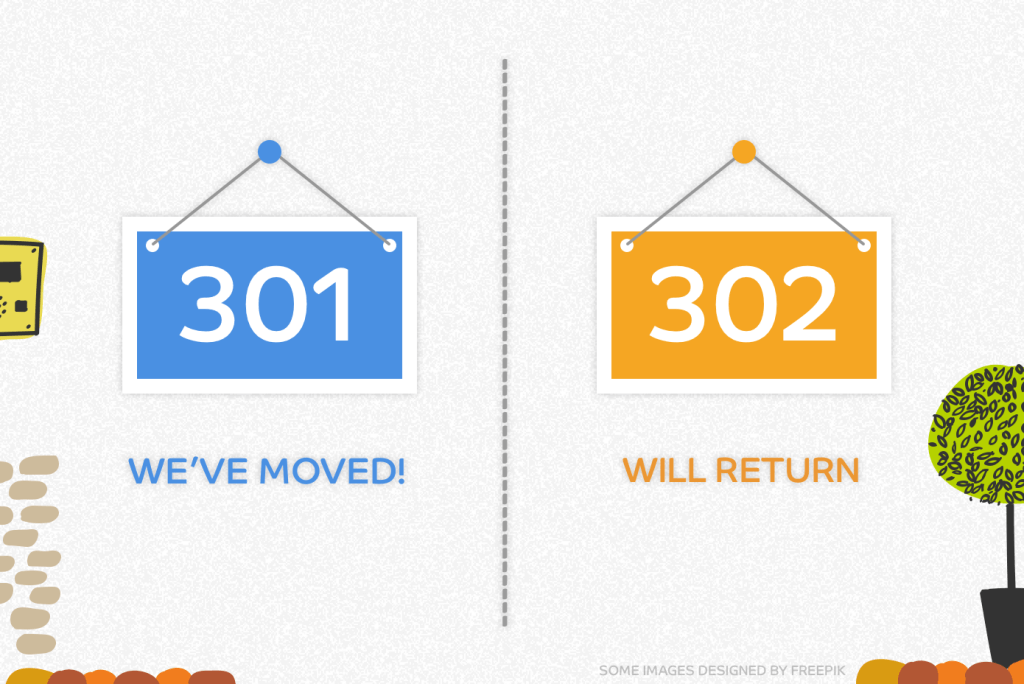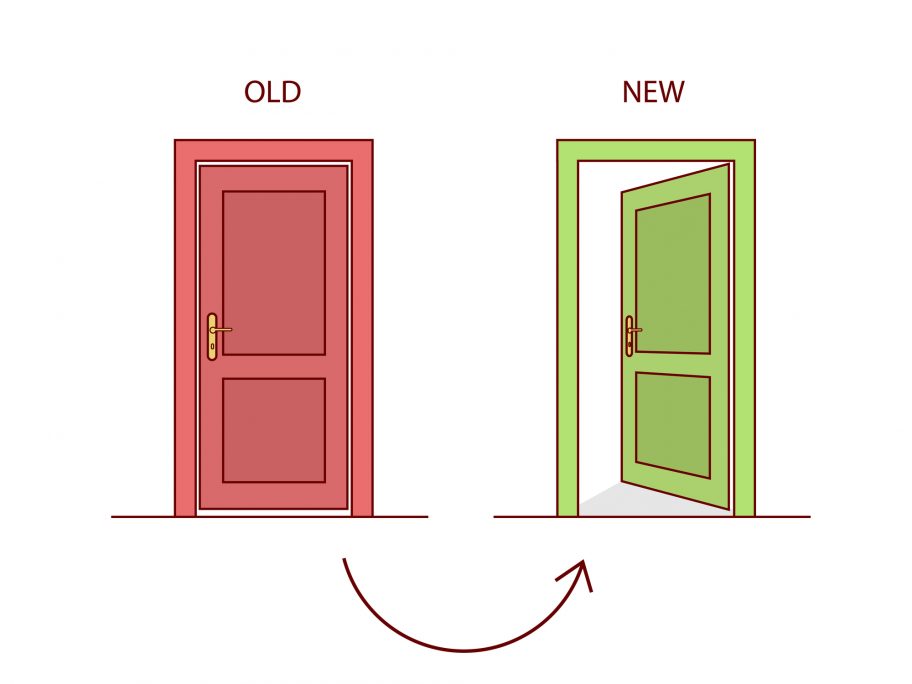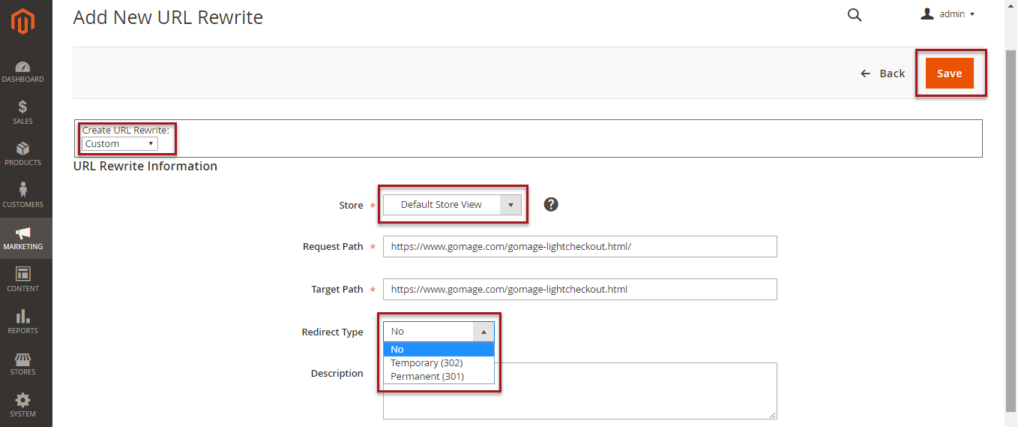301 and 302 codes redirect from one URL to another. For site visitors, it doesn't matter what redirect is used. This difference is important for search engines.
301 Moved Permanently – permanent redirect. This redirect tells search robots that the page has been moved to a new address and the original page can be excluded from indexing.
302 Moved Temporarily – temporary redirect. It informs the search engine that the page is temporarily moved and in some time it will be available again at the previous address. Search robots reindex it after a certain time.
The choice of the type of redirect depends on the task. If you need to save the page address and post information on it in the future, we recommend using a 302 redirect.
What are 301 and 302 Redirects in Magento
A redirect is a way to send users and search engines to another URL. 301 redirect indicates that a certain page of the website is permanently moved to a new address and its URL should be considered as invalid. What is important is that, in this case, about 90-99% of the reference weight goes to the new URL.
So, 301 (moved permanently) redirect is the best way to keep all website ranking in search engines when you are transferring it to a new domain or changing the content management system. The redirect can be done in several ways depending on the software being used.
Top reasons to add 301 redirect
Code 301 is an effective, easy-to-implement version of web page redirection. This is a convenient way to save the rating of a specific page of the site. Why should you choose this kind of redirect:
- saving “accumulated user signals” of content
- with the transfer of the reference weight of the new page
- redirection of traffic from other addresses to the desired one
- in the case of rebranding and domain change, so as not to lose customers
- moving pages
- gluing (with and without www, http and https)
- remove duplicate pages.
Attention! Stop choosing an address that is strategically more important, is preferred by visitors and search engines.
Redirect can be called some kind of a magic wand. In the case of moving the entire site or individual pages, it will retain all the results of the work which has already be done: the authority of the domain name and ranking in the search. The main thing is to use redirection as intended.
301 Redirect vs. Canonical Tag
It is important to keep in mind that a rel=”canonical” tag and 301 redirects seem to perform the same function but there are key differences between them:
- 301 redirect sends a visitor to another page which does not happen in the case when the rel=”canonical” tag is used
- 301 redirect shows the search engine that the previous page is outdated and must be replaced with the new one in its index, while the rel=”canonical” tag indicates that both pages will exist, but only one of them should be considered as a primary page for indexing.
When is it best to use 301 redirects?
- By default – this is the most acceptable way
- In the case of pages – if the page moves very often or it received a new address
- When working with domains – when the web resource has moved to a new domain (in the case of rebranding, sales, and other situations)
- For pages with code 404 and content that has lost its relevance (if you have more relevant content). For example, if you delete a product from your catalog, you can redirect visitors to a similar/similar product or to the category to which it belongs.
Where should you use rel = ”canonical”?
- If it is not possible to configure 301 redirects, or their usage will be too difficult.
If you have duplicate content, but you need to keep all versions of pages for users (for example, display different models of shoes under different URLs) - For pages with several different addresses. If in fact, it is the same page (for example, tracking partner links, catalog filters, etc.)
- In cross-domains, when both web resources have much in common, but the same materials should be placed on each of them.
All in all, both options make it possible to transmit reference weight, and according to Google’s rules, they will have the same interpretation. But, nevertheless, a 301 redirect should be preferred.
How to Use 302 Redirect: Main Definitions
Why do we need the 302 redirect? It is required in the following cases:
- during the implementation of technical work on the Internet resource;
- when the site owner wants to show other materials to visitors without making changes to the old page;
- if the hosting company sees the banned content on the site, it can close the page from visitors using a 302 redirect;
- if traffic from a specific domain is temporarily redirected to another resource.
302 redirect is useful for both search engines and people. Imagine that you are developing from scratch a stock page with many features. They need to be implemented during 3-4 days, from time to time correcting the appearance and source code of the document. If you do not use redirection, users will see the unfinished page and all changes, and search robots will send the first option to the list. 302 redirect allows you to put on the site an already finished page so that visitors immediately liked it, and search robots sent an optimized document to the issue.
Redirects due to 302’s are set in case a certain URL needs to be moved for some period of time only – not permanently. It will be indexed and visible in the search results, but when users click on it they will be redirected to another URL. In other words, 302 means that it will be deleted soon and the page will be available again. Keep in mind that a 302 does not transmit the reference weight from the old URL to the new one.
However, Google support notifies users about the fact that sometimes the search engine crawler may perceive a 302 as a webmaster’s fault and convert it to 301 redirect with all properties, so the reference weight will be given to the redirected page. Therefore, it is better to be careful with 302’s and use it only for its intended purpose.
How to Create a 301 or 302 Redirect in Magento
There are some cases when 301 redirects can be used. Learn them properly to make a correct choice:
- A specific online store URL changed its address permanently
- An outdated product page that will no longer be available. In this instance, all users may be redirected to the product category or to the page with relevant products
- The online store has moved to another domain
- The online store has multiple domains, and they are indexing
- A domain name with ‘’www’’ and without ‘’www’’ leads to the same page
- The URL with a slash at the end and without a slash at the end leads to the same page
When 302’s can be used:
- Certain items are not in stock but will be available later. It is really important for online stores to save the product page reference weight and provide users with other relevant products
- There are technical activities on certain pages of the online store
- If you need to show users some information without changing content on a certain page. For example, you have sales or special discounts in your online store and you’d like to show visitors another page with this information first
- If it is necessary to hide a specific page from visitors but there is no access to the admin panel of the website. It can be used by hosting companies when they detect prohibited or malicious content.
Magento 2 e-platform provides some options that allow optimizing Magento 2 stores that make it more SEO friendly. Redirects are one of the features that are available, so you can implement all necessary redirects in Magento 2 Admin Panel.
Go to Marketing, select URL Rewrites and click on Add URL Rewrite.
After this, you should select Custom from the drop-down menu and select your default store view from the Store field. Then enter the URL that will be redirected to the destination URL in the Request Path field. In the Target Path field, the Targeted URL should be indicated. On the last step, select the necessary type of redirection (301 or 302) and save your changes
How to Use 301 Redirect: Errors While Using Redirects
We hope that this guide will be useful for you and your website. That’s why we would like to pay your attention to some points which can be real mistakes in your workflow:
Any multi-level call forwarding. If this option is possible, you should not do redirects with multiple levels. If this is not done, then they will work much faster and pass the maximum amount of reference weight.
Using the wrong type of redirects. When you choose the type of redirection, you should take into account the nuances of each of them.
Introducing internal redirects without changing links to new addresses. After implementing all the redirects on your site, you need to check that each page of your site already refers to a new one and inside the site, you have no links to pages from which the redirect occurs.
Redirect to non-relevant pages/content. It is always advisable to redirect to the most relevant page: either on a similar page or on a branch of the directory/section to which the page belonged.
Redirect, the endpoint of which is not the 200th page. The redirect should lead to a properly working page with a 200 server response. Otherwise, it is advisable not to shoot down search robots and give 404 answers.
When there is no need to use redirects?
There can be several points when we do not have a specific need to use redirects. What are them?
1. If you temporarily move to a new page, it is better to use 302 and 307 redirect codes, in this case, the original page will not disappear from the search results.
2. If you move because of problems with the old domain (bans, filters, and fines), then in the case of gluing, not only TIC and PR will go to you, but also problems from the old domain will connect to the new one.
3. 301 and 302 redirects are real helpers for any webmaster, you just have to understand them correctly. They will help to work efficiently on optimizing and promoting the site.
General rules for working with redirects
- Absolutely all types of redirects carry a certain degree of risk to SEO.
- As a rule, 3xx redirects save PageRank, 301 redirect is more of a method for setting up a permanent redirect.
- If you acquire an online resource in order to redirect 1000 pages to your main page, you, of course, will not notice a significant increase in traffic.
- The most useful redirect is the one that leads to the page with the same theme as saved elements as the old page, not counting the URL.
- The transition to HTTPS is safe and keeps PageRank, but besides it, there are other factors that adversely affect the traffic and ranking of your site.
GoMage Company is a team of Magento experts who are ready to assist you. If have any questions, don’t hesitate to contact us. We hope that all the points, you have discovered in this article, were useful for you and your website.







